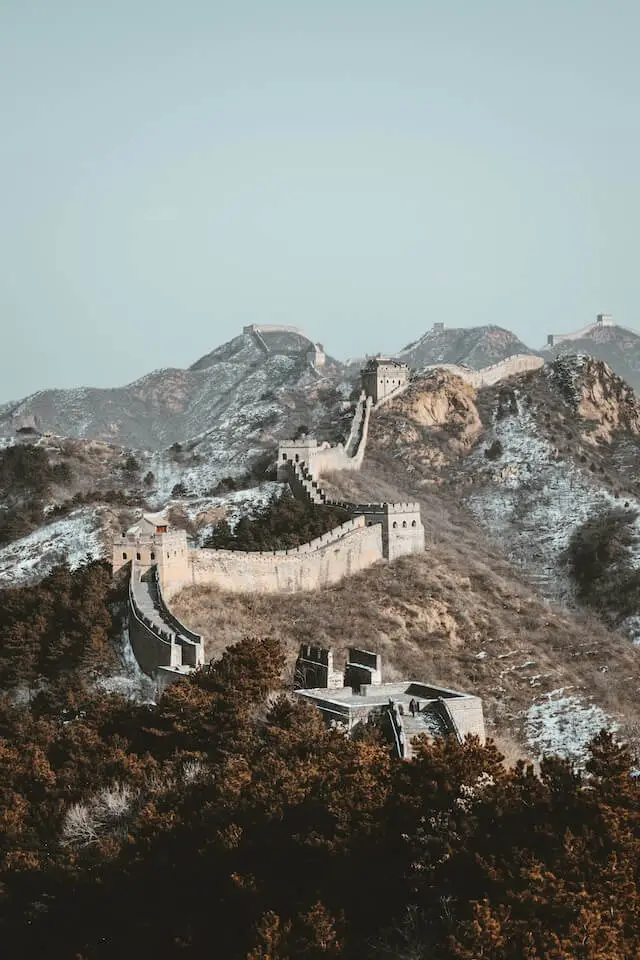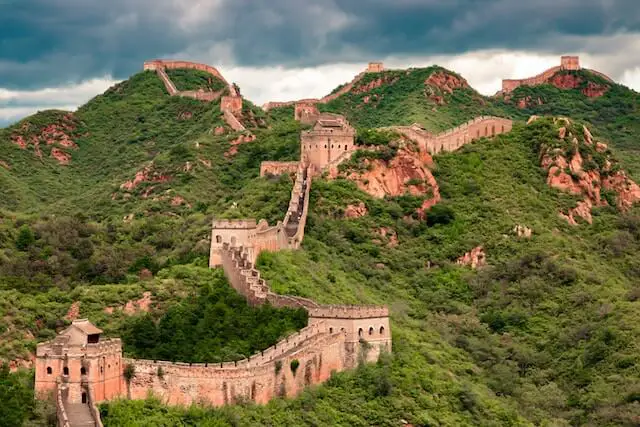Quiz Master's interesting facts
While many are aware of The Great Wall's monumental length, few know that it was not just the labour of emperors and soldiers but a collaborative effort, involving millions of people, including peasants, labourers, and prisoners. This inspiring marvel is a testament to the collective resilience and unity of the Chinese civilization.
The construction of The Great Wall was not just an engineering effort; it was a colossal human endeavour. Millions of hands, driven by the vision of a unified defence, toiled relentlessly to mould the stones, compact the earth, and fortify the watchtowers. It was a harmonious symphony of sweat and sacrifice, an orchestration of determination that spanned centuries.
Imagine the labourers, their calloused hands bearing the weight of history, as they toiled under the watchful gaze of the rising sun. They worked in harmony, each brick and stone aligning perfectly, not just as a defence against invaders but as a testament to human spirit and solidarity.
Within the Wall's vast expanse, there lies a mysterious region referred to as "Yingwu City" or "Moon City". This concealed section, situated in the Gansu Province, remained hidden from the world for centuries. Archaeological excavations have revealed a labyrinth of buildings and courtyards that once served as a strategic military stronghold.
Moon City secrets are hidden beneath layers of sand and time. Archaeologists, with brushes and trowels, meticulously unearth relics that whisper tales of its strategic significance. The remains of ancient barracks, lookout towers, and garrison offices hint at the meticulous planning that went into fortifying this remote outpost.
As you wander through the ruins of Moon City, a surreal sense of stepping back in time envelops you. Here, in this once bustling military outpost, history reveals itself in every stone. It was a silent sentinel, guarding the Silk Road and serving as a crucial hub for trade and communication.
Amidst the rugged terrains of Shanxi, an extraordinary phenomenon awaits those who listen closely. Certain stones along The Great Wall possess musical qualities, producing melodious chimes when struck. As the gentle breeze goes through the Wall, an ethereal melody fills the air. Each stone sings its unique tune, creating a harmonious symphony. Legend has it that these musical stones were used as a secret code by ancient guards, transmitting messages across vast distances without the need for words.
The significance of these musical stones extends beyond mere communication. It reflects the profound understanding of acoustics possessed by the Wall's architects. Each stone's shape and placement were carefully considered to harness the power of sound in enhancing communication and defence.
As we traverse the Wall, we'll encounter signal beacon towers, but did you know that not all of them are visible? Secret beacon towers, known as "Ghost Towers", were intentionally concealed from view to surprise and deter potential invaders. These covert sentinels played a crucial role in maintaining the element of surprise during conflicts.
As night falls, the once bustling Wall transforms into a realm of shadows and whispers. In the darkness, Ghost Towers emerge from their concealed vantage points, rising like spectres from the earth. These enigmatic structures, camouflaged among the rugged landscape, were the embodiment of tactical brilliance.

With each step, we tread in the footsteps of ancient generals, envisioning the strategic manoeuvres that took place in the cloak of night. The Ghost Towers were watchful guardians, lurking unseen until the moment of action. They exemplify the art of war, where knowledge of one's terrain and adversaries holds the key to victory.
Throughout its existence, nature has played a pivotal role in safeguarding The Great Wall. The dense vegetation surrounding some sections of the Wall has acted as a natural protector, making these areas impenetrable for invaders. Today, conservationists carefully maintain this balance, ensuring that the Wall remains resilient against both human and environmental pressures.
As the Wall snakes its way through dense forests and windswept plateaus, it becomes one with nature, integrating harmoniously into the landscape. The foliage, like an evergreen cloak, embraces the Wall with a protective embrace, guarding its ancient stones from the ravages of time.
Conservation efforts pay homage to this delicate relationship between nature and history. Careful maintenance ensures that The Great Wall stands tall against the elements, an enduring testament to the delicate balance between human ambition and Mother Nature's gentle embrace.
Ancient Chinese astronomers had a deep connection with The Great Wall. They used it as a prominent reference point to observe celestial phenomena, including eclipses and the movement of stars. The Wall's alignment with celestial objects played a significant role in their studies and understanding of the cosmos.
As the sun dips below the horizon, casting a golden glow over the Wall, one cannot help but imagine the astronomers who once gazed upon the heavens from its ramparts. They studied the stars, mapped constellations, and sought solace in the celestial dance above.
The Great Wall's astronomical significance goes beyond celestial observation. Its alignment with cardinal directions reflects the ancient Chinese belief in the harmony between heaven and earth. It was a living embodiment of the cosmic order, a bridge between the human realm and the infinite expanse above.
In the desert regions of Gansu and Ningxia, remnants of a lesser-known defence system called "Dragon's Teeth" stand silently. Rows of massive square-cut stones were buried underground, designed to halt the advancement of enemy cavalry. This innovative defence mechanism was yet another testament to the strategic brilliance of the Wall's architects.
As we descend into the desert's sun-baked sands, the "Dragon's Teeth" come into view – a seemingly impenetrable barrier rising from the earth. These hidden fortifications lay in wait, daring any foe to challenge the Wall's formidable defences.
The Dragon's Teeth were a marvel of engineering, constructed to stymie the might of cavalry charges that sought to breach the Wall's defences. Buried beneath the desert floor, these formidable obstacles reveal the military ingenuity that went into safeguarding the Silk Road and China's heartland.
Though The Great Wall predominantly traverses land, it surprisingly extends beneath the water's surface. In the tidal flats of the Bohai Sea, submerged remnants of the Wall lie hidden, waiting to be explored. These underwater sections were part of an ancient coastal defence system, providing insights into maritime security during the Wall's heyday.
As we venture into the shallow waters of the Bohai Sea, history merges with the ocean's depths. The submerged Wall whispers secrets of naval defences, once utilised to repel potential threats from the sea. These watery vestiges paint a vivid picture of the Wall's far-reaching influence, extending even beneath the waves.
Here, amidst the serene waters, the Wall's fortifications take on a surreal quality. It serves as a poignant reminder that the Wall's legacy goes beyond the terrestrial realm. The ancient architects thought not only of land-based incursions but also of safeguarding their shores from the maritime perils of yesteryears.



